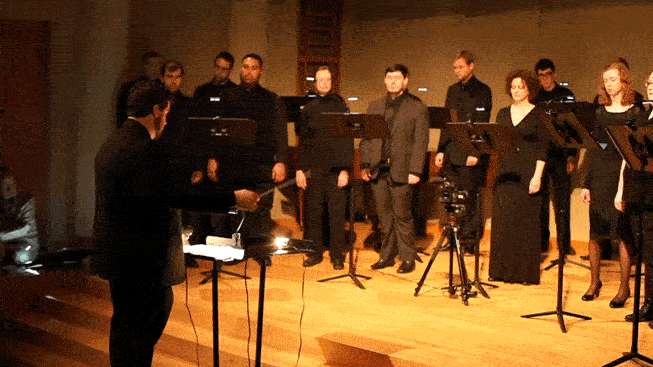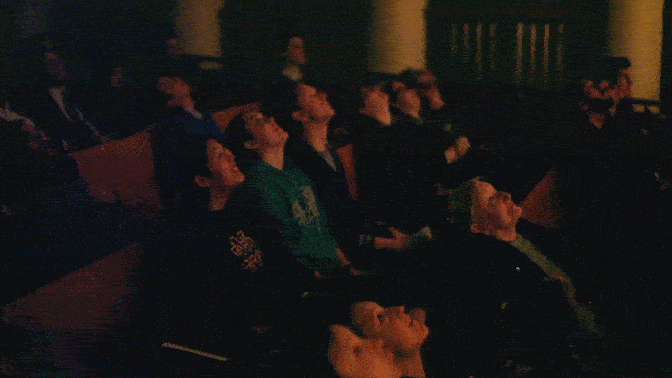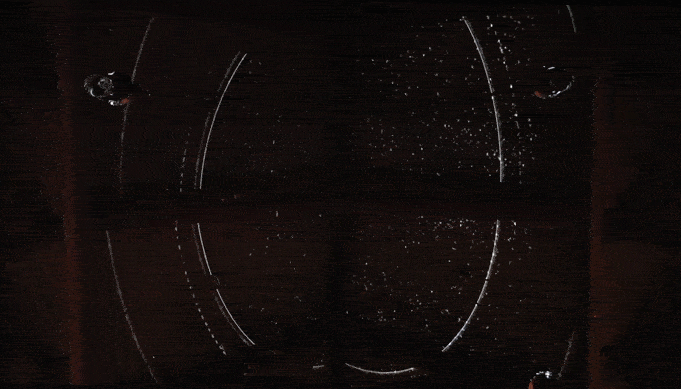Sarah Edmands Martin
Brandan Barker, MSM
Art Direction, Projection Mapping and Video Editing:
Conductor:
Luminosity is a motion piece designed for James Whitbourn’s modern cantata of the same name. Synthesizing contemporary methods of projection mapping, live music performance, and video installation art, the work challenges linear narratives in traditional music performance, as well as the experiential nature of light and sound.
The site-specific work, performed in a baroque, chapel-like Organ Hall used by traditional ensembles, follows a live conductor, organist, choir, orchestra, and soloists through Whitbourn’s seven-movement work. Activating the architectural structure, we render and map enchanting video vignettes into the recesses of the three-story ceiling, recalling the French son et lumière or “sound and light shows” of the 1950s.
Approximately 40 feet by 25 feet, the intercrossed ceiling canvas has a specificity of form that requires illumination. Projecting video and animation through its vaulted wood beams, the façade morphs into an array of portals, cycling through seasons and oscillating between the celestial (the abstract) and the earthly (the tangible). Both light and shadow give shape to the unknown.
Through this projected imagery, the audience is given a different set of interpretive cues.
Not just graphic support, the motion vignettes are an opportunity for contemplation on both the visual and auditory experience of Luminosity. For example, the act of looking up at the cathedral ceiling recalls looking up towards the sky, a method of perceptual isolation advocated by Tibetan Buddhists to achieve meditative states.
This references the Carnatic themes found within Luminosity’s score and promotes meditation over storytelling. Immersive video qualifies lyrical meaning. For example, an orchestral crescendo or pianissimo notation is met with an immersive signification of light: blossoming starlight or a dousing of the house lights all together.
A response to the “sensibilities” of Western tonality and frontal cinematic viewing of art, the work does not progress in a linear movement with traditional tensions and resolutions, but instead, employs cyclical techniques of Zen meditation, above and around its audience.
The interplay between architectural character, digital texture, and tromp l’oiel illusion in this interdisciplinary performance provides a hermeneutic aperture via which a viewer discovers new interpretive significations of Luminosity, the cantata.
Tech specs, for those interested: video editing in Adobe After Effects and Premiere, rendering animations, textures, and complex effects. Further installation and syncing of 6 projectors to the live performance. This required Projection Mapping programs like Isadora and installation engineering in order to control the 3-dimensional illusion over time. Like the son et lumières before it, this work leverages emerging technologies across multiple disciplines in order to delight and inspire its audience. By employing these technologies to promote multi-sensory immersion, Luminosity emphasizes bodily experience--providing a counter to the 'screen'.




